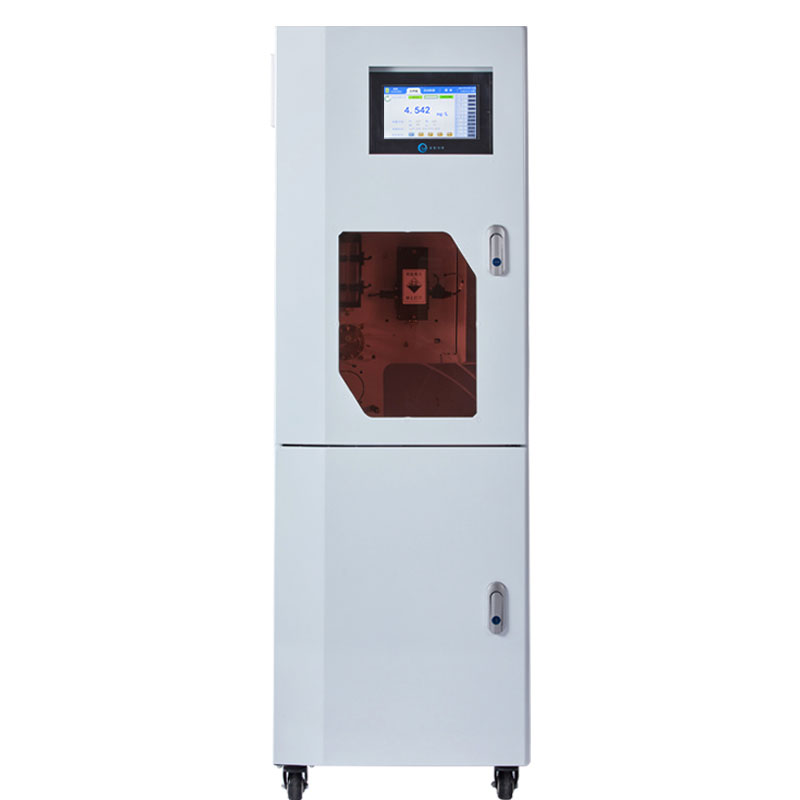Tianyi Sensor IOT Technology Co., Ltd
Sales Manager:Ms. Emily Wang
Cel,Whatsapp,Wechat:+86 15898932201
Email:info@fengtutec.com
Add:No. 155 Optoelectronic Industry Accelerator, Gaoxin District, Weifang, Shandong, China

Sales Manager:Ms. Emily Wang
Cel,Whatsapp,Wechat:+86 15898932201
Email:info@fengtutec.com
Add:No. 155 Optoelectronic Industry Accelerator, Gaoxin District, Weifang, Shandong, China

Model:FT-COD
Brand:tianyi
1.COD Analyzer principle
COD Analyzer uses spectrophotometry to determine the Chemical Oxygen Demand (COD) and is the ideal solution for monitoring water or wastewater contamination.A quantitative potassium dichromate solution was added to the sample.In a strong acidic medium, silver sulfate was used as a catalyst, and the chloride ion concentration was reduced using a unique dilution injection technique, and a combined masking of high concentration of chloride ions was used.After digestion after high temperature and high pressure, the COD concentration value was determined by spectrophotometry.
2.COD Analyzer product features
The new optoelectronic quantitative technology is not affected by interference such as large chromaticity, many suspended objects, and many bubbles.It has high reliability and accuracy and strong anti-interference ability.
High detection accuracy, low measurement limit, and low long-term drift of the instrument.
It has one-click self-test function and self-diagnosis function.
It adopts a single-channel high-integrated valve set, making maintenance and cleaning simple and fast.
All-weather networking function, monitoring the operating status of the instrument anytime and anywhere.
It has alarm function, quality control function and counter control function.
It has automatic cleaning function and automatic calibration function.
It has full-point measurement, interval measurement and external control measurement.
It works automatically after power failure recovery.
Automatic prompts and automatic reset functions for faults and reagents (samples).
It has fault logging function.
Can save historical data for more than 3 years.
Satisfies the separation of cleaning liquid and waste liquid
3.COD Analyzer Technical Parameters
Measurement method: According to standard HJ828-2017 "Water quality-chemical oxygen consumption determination-dichromate method"
Measuring range: 0-200 mg/L; 0-500 mg/L; 0-1000 mg/L; range can be customized
Display error: ≤±3% detection limit: 10mg/L
Repeatability: ≤±3% Waste liquid volume: 6mL/time
Memory effect: ≤±3%Real water sample comparison: ±8%
Constant temperature time: 900 seconds Voltage stability: ≤±5%
Measurement cycle: 39 minutes Calibration cycle: any specified time
Maintenance cycle: ≥720h/time Maintenance workload: <2 hours/month
Reagent consumption: 3 months/500ml display output: configured with a 10.1-inch color LCD touch screen
Color rendering temperature: The recommended temperature is 165℃, which can be set according to the actual water sample condition
Data export: The measured value can be imported into the USB drive and saved in the USB drive.
Signal output: RS485/RS232/USB interface/standard 2-channel 4-20mA output/standard two-channel switching input and output
Environmental requirements: Indoors with controllable temperature, recommended temperature (5-28℃), humidity ≦90% (no condensation)
Power supply and power: (220V±22) V/AC, (50±0.5Hz), 5A, 150W
Instrument size: upper cabinet 600*450*300mm; upper cabinet 700*450*300mm
The Micro water quality station is a highly integrated professional device that combines various functions such as sensor technology, data collection and processing systems, and communication modules. Its working principle is based on the monitoring of various parameters in the water body by differe...
Negative oxygen ion monitoring stations collect real - time data on negative oxygen ion concentrations in the environment through sensors, and transmit the data to the background for processing and display via communication technologies. The core of this system lies in its precise perception of the...
What are the display methods of the Negative Oxygen Ion Monitoring System?Liquid Crystal Display (LCD) is a relatively common display method. Many negative oxygen ion detection devices are equipped with LCD screens, such as small environmental monitoring stations. It can clearly present the negative...
Underwater sonar imaging sounder is a portable underwater detection device integrating sonar technology and video recording. It generates high-resolution underwater topographic images, 3D models, and target location information by emitting sound waves into the water and receiving the echoes. It is suitable for single-person outdoor operations such as underwater search and rescue, topographic mapping, and engineering surveys....